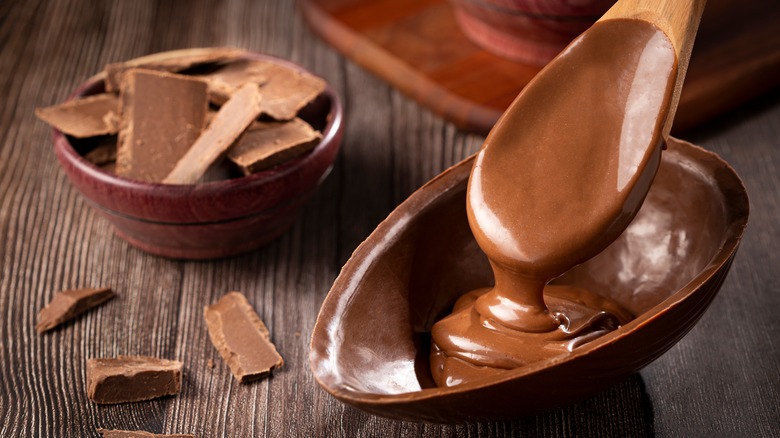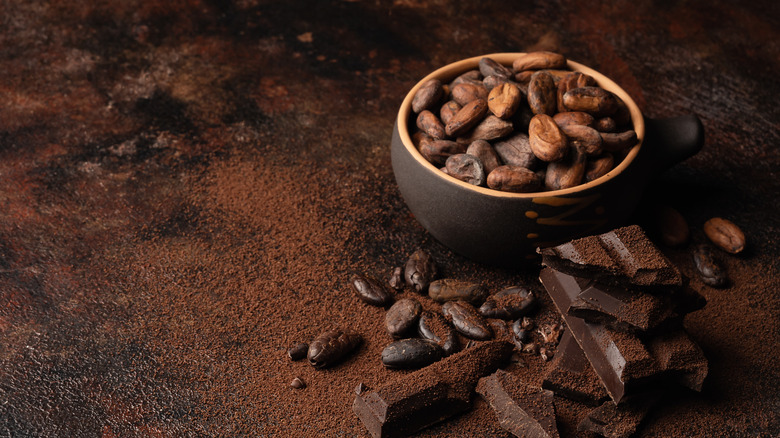The Surprising Ingredient That's Become Cheaper Since The Ukranian War
Easter may have come and gone, but that's no reason to stop indulging in your favorite chocolates — and now there may be a financial benefit to continue enjoying this sweet treat. Per The Wall Street Journal, raw cocoa prices are a bit lower today than they were before Russia invaded Ukraine; a ton of cocoa now costs $2,483.27 from $2,489.84, which is how much cocoa cost before the war started.
Analysts who spoke to the WSJ, like Jonathan Parkman who is joint head of agriculture at Marex Financial, say cocoa prices have only risen about 18% since the start of the COVID-19 pandemic, and supplies are stable. This is far cry from the past prediction that chocolate may be among the 2022 food shortages.
The slight decrease in the price of cocoa is significant because it's comparable to other agricultural commodities like corn and wheat, which have risen by (nearly) an astounding 150% since the start of the pandemic. The discrepancy in the prices between staples like corn and wheat, which are used to manufacture savory snacks, and chocolate, can be explained by the fact that cocoa is not as sensitive to the shocks created by the fighting in Europe. Before the war, Ukraine supplied 11.5% of the world's wheat and 17% of the world's corn, while Russia provided 16.8% of global wheat supplies, per Deutsche Welle.
Milk and sugar prices are still up
The Wall Street Journal warns that cheaper cocoa stocks don't necessarily translate into less expensive chocolate, since candy makers still have the price of sugar and milk to contend with. The United Nations reports that food prices are still trending upwards, with sugar prices rising about 6.7% in March and milk powders up 2.6%, making milk 23.6% more expensive than it was in March of 2021.
Still, the stable cocoa supplies seen for 2022 gives premium chocolatiers like Barry Callebaut reason to cheer. During the company's recent earnings call, which was held earlier in April, the company reported strong profits on the back of volume growth. The company's chief innovation officer, Peter Boone, said the firm saw "Global Cocoa volume was back to positive growth of 4%." Additionally, the company President of Barry Callebaut Asia Pacific, Ben De Schryver, reports that "the ripple effects of COVID-19 led to an imbalance cocoa market, which, however, seems to have bottomed out, reflected in a stable combined ratio of 3.4 times," per Seeking Alpha. Normal volume means fewer supply chain issues for companies like Barry Callebaut, so we can count on a stable chocolate supply — at least for the months ahead.

